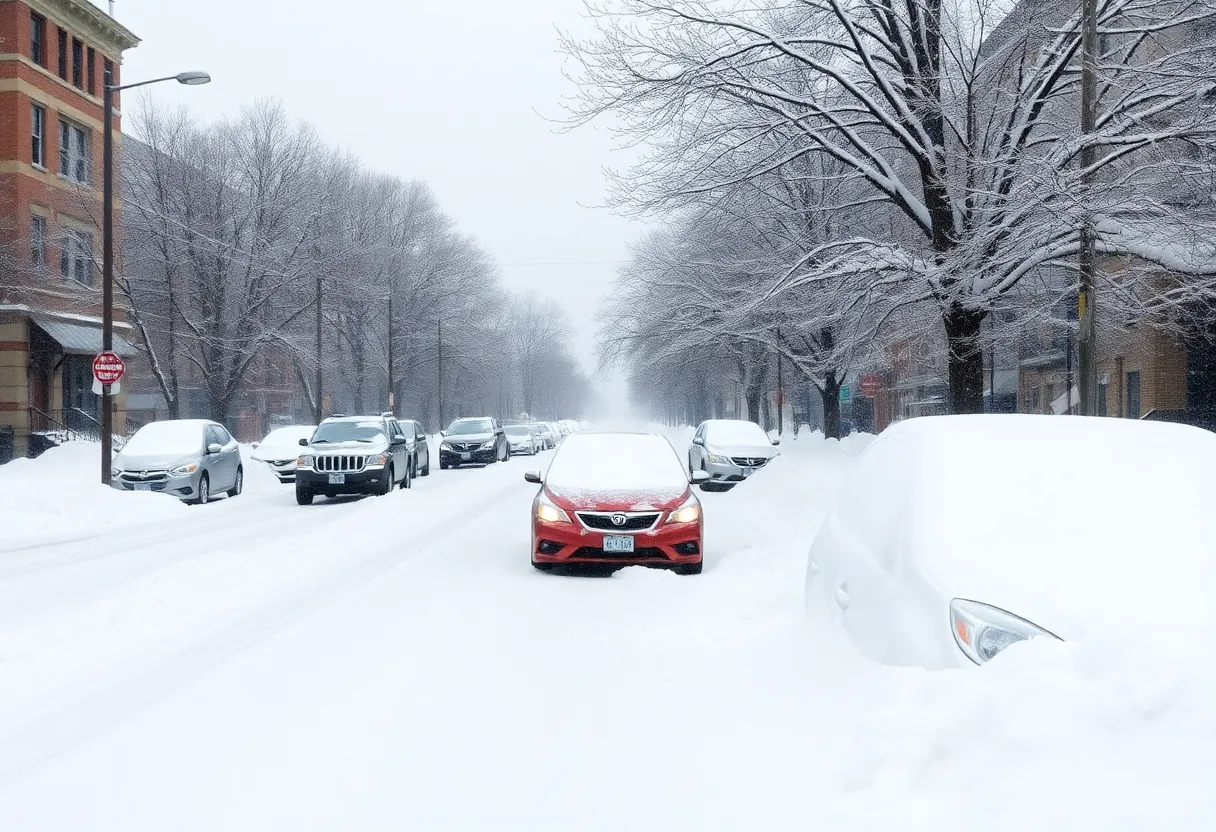Buffalo, NY, October 13, 2025
Buffalo, NY experienced a rare early-season lake-effect snowstorm on October 13, dumping up to 4 feet of snow, disrupting travel and daily life. Residents faced widespread power outages and school closures as officials urged everyone to stay indoors. The snowstorm highlighted the region’s vulnerability to lake-effect weather patterns, drawing parallels to a similar event in 2006. Cleanup efforts are underway, but predictions of additional flurries complicate recovery operations.
Buffalo, NY Faces Rare Early-Season Lake-Effect Snowstorm
In Buffalo, New York, a rare early-season lake-effect snowstorm struck on October 13, 2025, dumping up to 4 feet of snow in parts of Western New York. This intense weather event paralyzed travel and disrupted daily life, echoing a similar crippling storm from 2006. Local officials urged residents to stay indoors as the storm’s heavy snow bands, driven by strong winds, caused widespread power outages and school closures across Erie County.
The storm’s immediate impacts included thousands of residents losing power and major roads becoming impassable due to the heavy snowfall. Snowplow teams worked overtime to clear streets and highways, but the conditions remained hazardous, leading to warnings from the National Weather Service. Meteorologists explained that the storm’s intensity resulted from a combination of cold air masses interacting with the warm waters of Lake Erie, creating ideal conditions for heavy lake-effect snow.
Cleanup efforts began shortly after the storm subsided, with crews focusing on restoring power and reopening schools and businesses. Forecasters predicted additional flurries for the following day, October 14, 2025, which could further complicate recovery operations. This event highlighted the region’s vulnerability to lake-effect weather patterns, which are common in Western New York during the winter months but unusual in October.
Supporting the broader context, the snowstorm disrupted not only transportation but also local events and activities in the area. For instance, ongoing community gatherings and seasonal attractions were affected, as residents dealt with the unexpected weather. The storm’s timing, marking an anniversary of a similar event in 2006, underscored the recurring nature of such weather phenomena in the region.
Historically, Buffalo and surrounding areas in Western New York are prone to lake-effect snow due to their proximity to the Great Lakes, particularly Lake Erie. The 2006 storm, which occurred on the same date, was a benchmark for severe weather, bringing comparable amounts of snow and similar disruptions. Experts attribute these storms to the lake’s ability to retain warmth into the fall, clashing with incoming cold fronts. This latest event serves as a reminder of the need for preparedness in the face of unpredictable weather.
The economic toll from the storm is expected to be significant, with businesses facing delays and potential losses from the shutdowns. Erie County’s emergency services were fully mobilized, emphasizing community safety as the top priority. Residents were advised to monitor weather updates and avoid unnecessary travel to prevent accidents on slippery roads.
As recovery progresses, the focus remains on restoring normalcy. The storm’s effects extended to neighboring areas, though Buffalo bore the brunt of the snowfall. This event not only disrupted power for thousands but also canceled various local activities, including cultural and seasonal events planned for the week. Overall, it demonstrated the challenges of living in a region influenced by lake-effect weather.
In summary, the October 13 snowstorm in Buffalo, NY, was a powerful reminder of nature’s impact on daily life. With up to 4 feet of snow, it caused widespread disruptions, including power outages and school closures, while drawing parallels to past events. As the community rallies for cleanup, the incident highlights the importance of weather preparedness in Western New York.
Background on Lake-Effect Snow
Lake-effect snow occurs when cold air passes over warmer lake waters, leading to heavy snowfall in nearby regions. In Western New York, Lake Erie plays a key role in these events, especially during transitions from fall to winter. This storm’s early timing in October is atypical, making it a notable occurrence. Such weather patterns can vary yearly, but they consistently pose risks to infrastructure and safety in the area.
To expand, the interaction between cold air and warm lake surfaces creates narrow bands of intense snow, often affecting specific locales like Buffalo more severely. This event’s scale, with up to 4 feet of accumulation, mirrors historical patterns and reinforces the need for ongoing monitoring by local and regional authorities.
FAQ Section
Frequently Asked Questions
- What happened in Buffalo, NY on October 13, 2025?
- A rare early-season lake-effect snowstorm dumped up to 4 feet of snow in parts of Western New York.
- What were the immediate impacts of the storm?
- The storm paralyzed travel, disrupted power for thousands, and closed schools across Erie County.
- How did officials respond to the event?
- Local officials urged residents to stay indoors, while snowplow teams worked overtime.
- What caused the storm’s intensity?
- Meteorologists attribute the intensity to a perfect storm of cold air and warm Lake Erie waters.
- What is the forecast following the storm?
- Cleanup efforts are underway, with forecasts predicting more flurries tomorrow.
- How does this event relate to past occurrences?
- This unusual October blizzard highlights the region’s vulnerability to lake-effect weather, echoing the crippling event from this date in 2006.
Key Features Chart
Below is a simple table outlining the key features of the snowstorm event:
| Feature | Details |
|---|---|
| Date | October 13, 2025 |
| Location | Buffalo, NY, and parts of Western New York |
| Snow Accumulation | Up to 4 feet |
| Major Impacts | Paralyzed travel, power disruptions for thousands, school closures in Erie County |
| Response Measures | Urged residents to stay indoors, snowplow teams working overtime |
| Forecast | More flurries predicted for October 14, 2025 |
| Historical Context | Echoes 2006 event; highlights vulnerability to lake-effect weather |
Deeper Dive: News & Info About This Topic
HERE Resources
Buffalo Launches Third Year of Winter Preparedness Series




